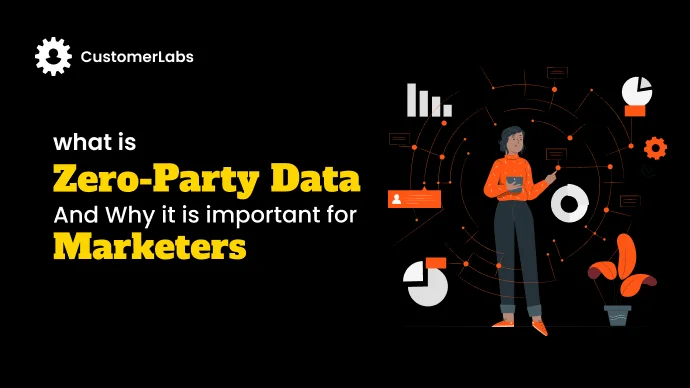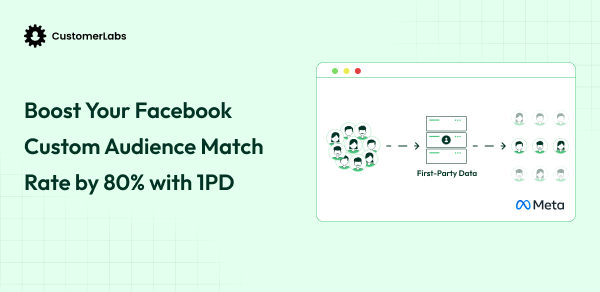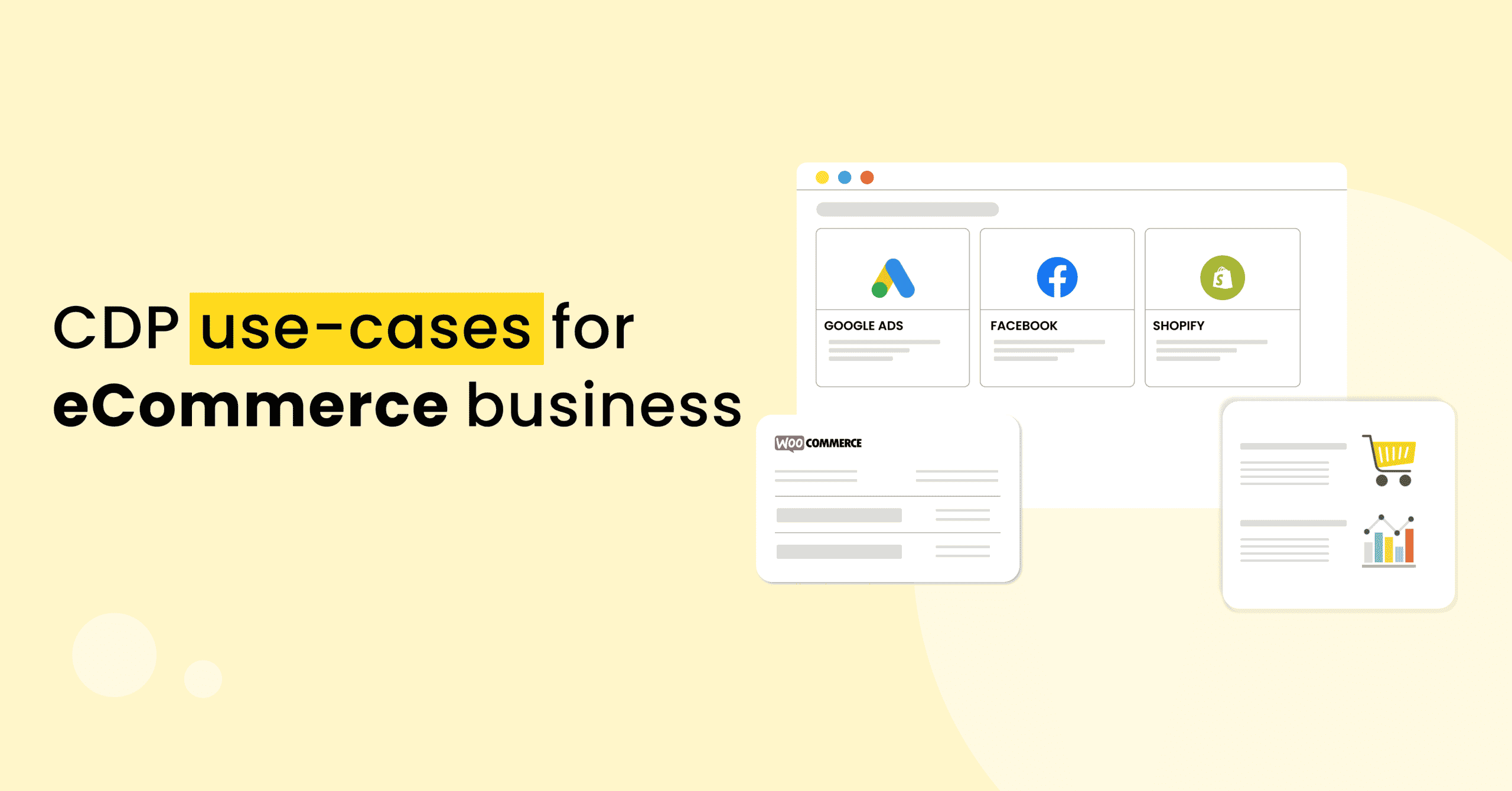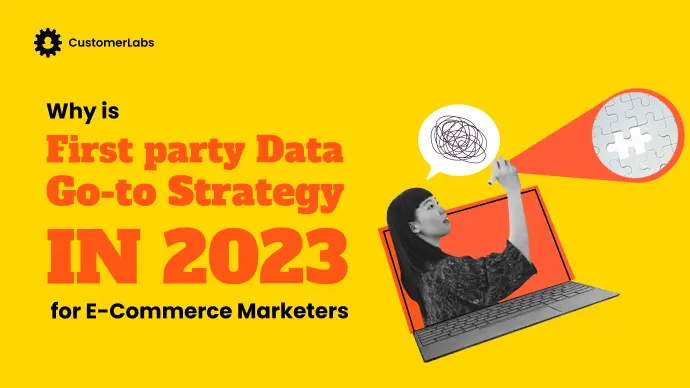
The clamor for privacy is universal. With the demise of third-party cookie tracking and the emergence of privacy regulations like GDPR, CCPA, and iOS’14 updates there is a drop in
- Ad campaign performance
- Facebook event match quality
- Custom audience match rates
- ROAS
Collecting First-party data is the only way out of this mess.
So, Marketers who are still relying on ad platforms like Google and Facebook to run ad campaigns are officially screwed.
Because relying on third-party data might do the work for you now, but we are sorry to tell you that is not going to work in the near future.
First-party data will be the go-to strategy in 2023 for marketers.
What is First-party Data?
First-party data is the first-hand information that a business collects directly from its own customers. It is the information provided by the customer consensually, which is further used for their personalized engagement.
There are two types of first-party data i.e., information collected from,
- Known visitor
Known visitors are of the most value where we have available user behavior information which also includes their name and e-mail.
- Anonymous website visitor/ unknown visitor
Anonymous visitors may be new or returning visitors to your website who haven’t given you their personal information like name or e-mail id address.
Anonymous visitor data is also first-party data which is equally important as collecting known visitor data. Identifying these anonymous website visitors and turning them into customers is winsome.
Everyone would be rolling their eyes, a few years back, if we said that they need to have a solid first-party database to keep in pace with the changing times of privacy & transparency. But why have the tables turned now? Marketers are shifting to first-party solutions. Why?
Factors That Prompt The rise Of First-party Data
The GDPR & CCPA
The General Data Protection Regulation (GDPR) is EU-wide law that protects Europeans in regard to the processing of their personal data.
By this law, businesses need to obtain prior consent to collect personal information from their website visitors.
The California Consumer Privacy Act (CCPA) is a data privacy law that regulates how businesses all over the world are allowed to handle the personal information of California residents.
By this law, users can opt-out of third-party data selling, and have the right to request disclosure of their personal data collected, and even the right to deletion of data collected.
As these laws came into action, users can bid adieu to third-party tracking which is bad news for marketers.
Browsers cease third-party tracking
Major browsers Apple Safari, and Mozilla Firefox, have denounced third-party cookies. Safari and Firefox have been rigorous in blocking out third-party tracking.
However, Google has delayed phasing out third-party cookies until 2023.
Apple updates iOS 14.5
After the Apple iOs’14 updates, Apple users can opt out of third-party tracking which limits Facebook in
- ability to deliver ads
- Measure & report on conversions
- Predict & optimize cost per action
- Budget allocation
- personalization
These privacy regulations and data titans have been making the rules of digital marketing. Google has been advising marketers to start investing in first-party solutions to secure their place in the changing digital landscape.
What Do Google and Facebook Say About First-party data?
After iOS’14 and Google phasing out third-party cookies, there is a fall in ad campaign performance, due to the limited access to information.
In the recent BCG study, nine of ten marketers say that first-party data is important but only little to few marketers use the full potential of 1st party data.
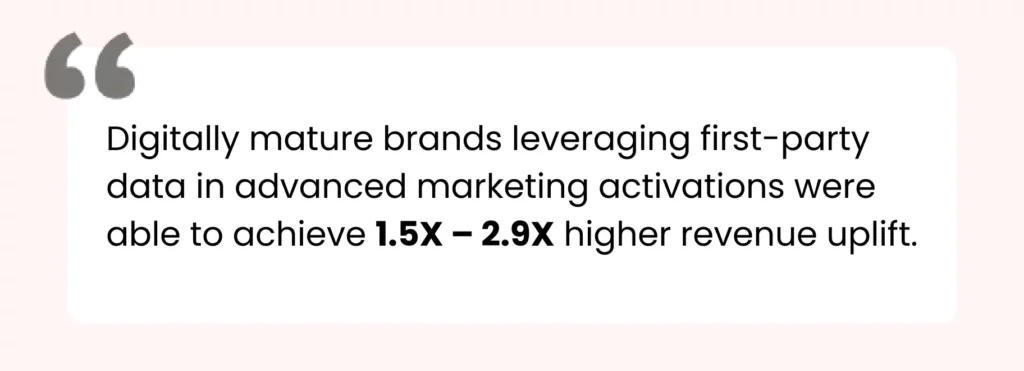
Marketers have been relying on third-party data to run retargeting and personalized ad campaigns. According to Google, a 2019 survey conducted by Harris Poll for RedPoint Global found that
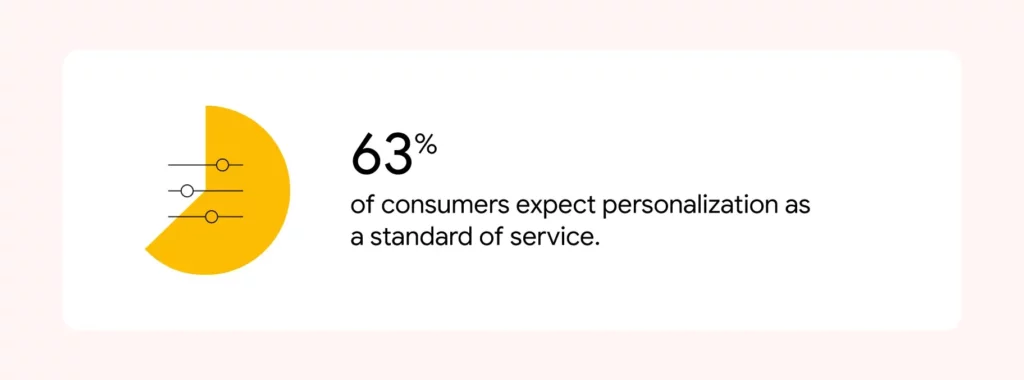
They also found that about (54%) of the 3,000 participants were willing to share personal information if it would be used to curate personalized experiences; that increased to 70%- 72% when focused on millennials and Gen Zers.
On the other hand, there is a dilemma between users on how the information they provide online is used to curate their shopping experience.
Personalization facilitates more engagement and collection of 1st party assets and at the same time enhances customer experience and trust.
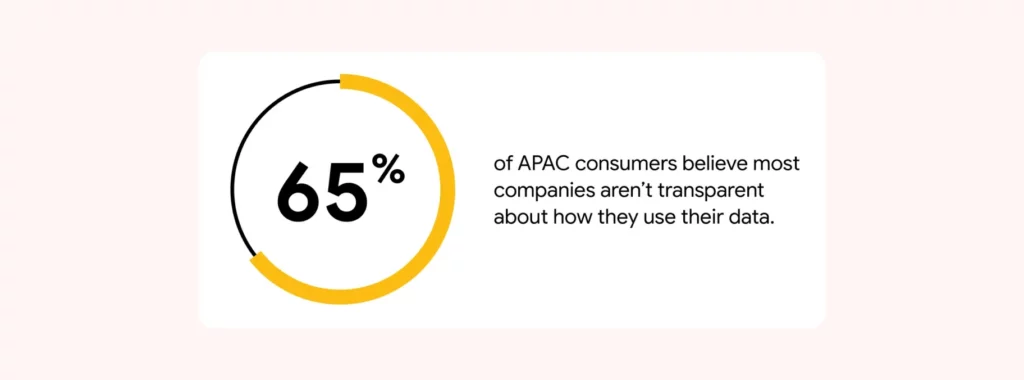
After iOS’14, Google and Facebook don’t have access to information like before. But, with 1st party data, you can collect rich behavioral information thereby enhancing your chances to run personalized ads.
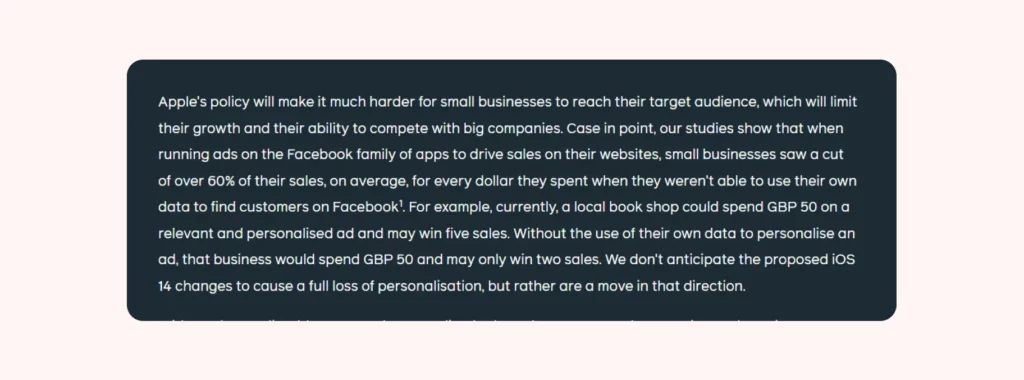
Why Is It Important For Businesses To Collect First-party Data?
As we bid farewell to third-party cookie tracking, first-party data is the new north star in digital marketing.
People often prefer and pay attention to ads that are relevant to their needs and tastes. But, they are also more concerned about how their information is being used. Tailored messages are essential to delivering such a personalized experience. But, to deliver such an experience in compliance with all the privacy updates is quite the task.
First-party data can help you to achieve just that.
- The specialty of first-party data is that it is available only to you, unlike third-party data. It is unique.
- You can directly collect data from consumers through an app/website and voila!
- It’s your data and you can store it forever unlike Facebook’s 180-day retention policy.
- First-party also improves your campaign performance thereby increasing your ROAS, as the data is more relevant and accurate. You can deliver the right ads to the right person at the right time.
Isn’t that so sweet? But still, Google says that marketers are not harnessing the full potential of first-party data.
Here, in CustomerLabs 1PD Ops, our client W for Women used first-party data strategies and saw a 2-3.5x increase in their ROAS and reduced cost per purchase by 35%.

With CustomerLabs 1PD Ops, you can also collect anonymous website visitors
Having boasted first-party data, how can marketers collect first-party data?
How To Collect First-party Data?
When we were surfing through the web on how to collect first-party data, every blog that popped up speaks about collecting first-party data from your known sources i.e, collect via e-mail/web contact, surveys & questionnaires, etc.
but, anonymous website visitor data is also first-party data.
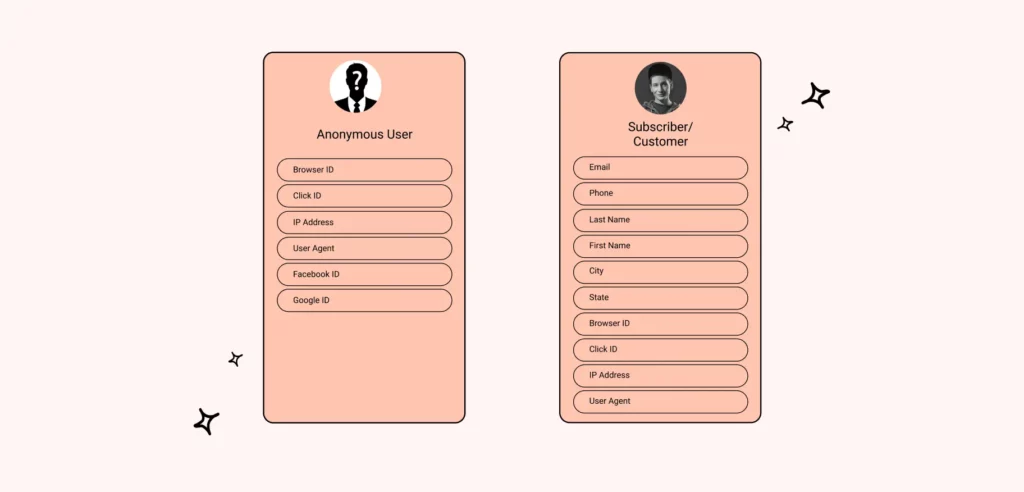
First-party Data Use-cases
Try these first-party data use cases for better ad campaign performance
1. Advanced audience segmentation for personalized engagement
- Run personalized ad campaigns for the MoFu audiences and BoFu audiences rather than running generic all-website visitors retargeting campaigns.
- Classify your website visitors into smarter segments based on activity, traits, location, or events.
- create segments such as a customer visiting a product page,check-out page, shopping cart abandonment by shoppers, etc.
- Here is an example. Customers who bought products like candles during a festive season 6 months back can be segmented to run ads, especially for them with a discount in the upcoming festive season.
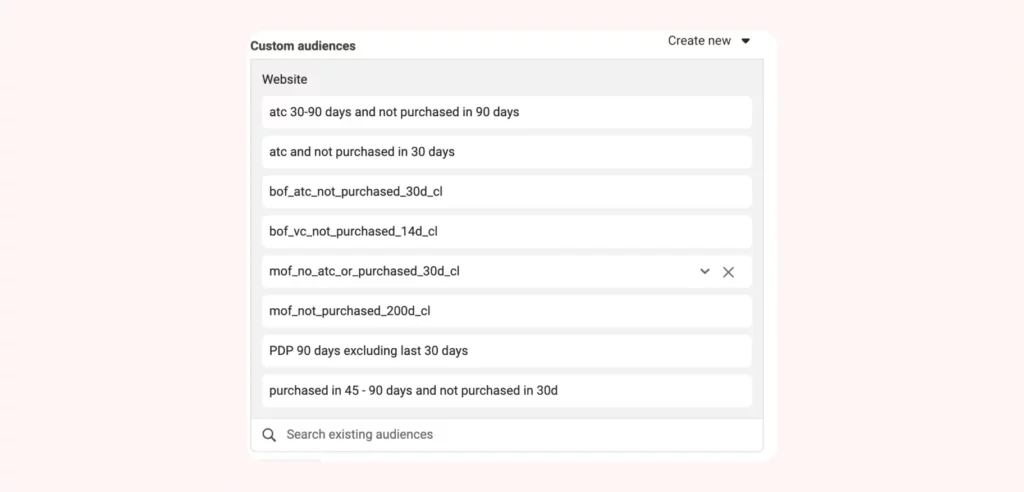
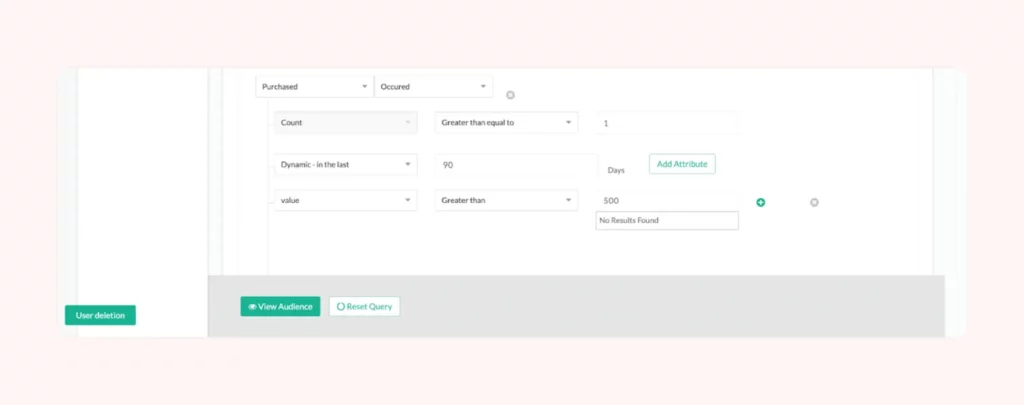
2. Funnel based campaigns
The usual way for a campaign budget split for your funnel would be distributed like this (80%,0%,10%).
But after you start collecting 1st party data, you can split the budget as (60%,30%, and 10%).
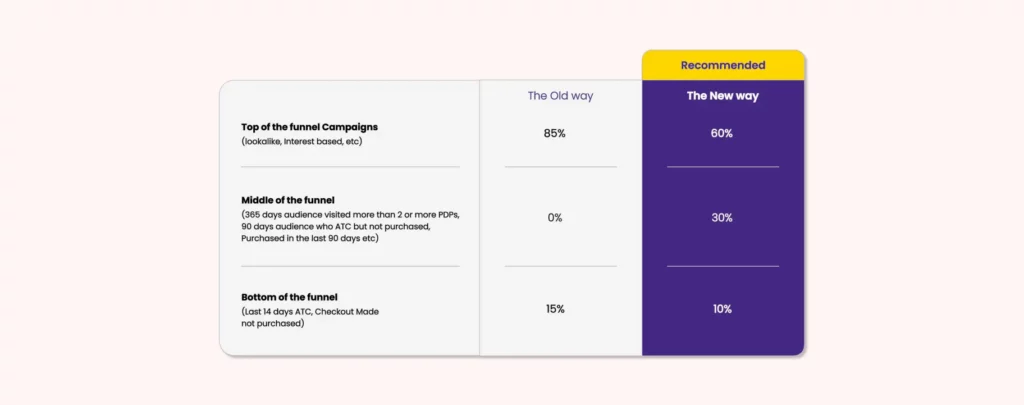
The bottom of the funnel is still the same where you target cart abandoners with your DPA (dynamic product ads) and convert them. You can’t scale this further.
The middle of the funnel is where your high-intent audience lies and this is the major chunk that you can utilize for your retargeting. Since this is a larger audience size compared to Bofu, you can distribute your budget to 30% and start testing.
You can further micro-segment your mid-funnel
- High intent
– Added to cart but not purchased in last 15 days
– cart abandoned more than 30 days
– product viewed not added to cart
– product viewed more than 5 times
- Medium intent – Product viewed last 365 days
- Low intent – Page viewed last 365 days
Let’s look at two different strategies you can use for boosting your campaign performance using first-party data
- Strategy 1 -When you have a smaller audience size (scaling is directly proportional to your audience size)
Two major factors that affect your campaign metrics are
- Audience size
- Reach
For example, if the audience size of your campaign is 10k with the frequency set to 2, based on your budget say $100, and say your reach is 1000 per day, you would have exhausted the audience in 20 days. You can’t scale this further. There will be a point of diminishing returns.
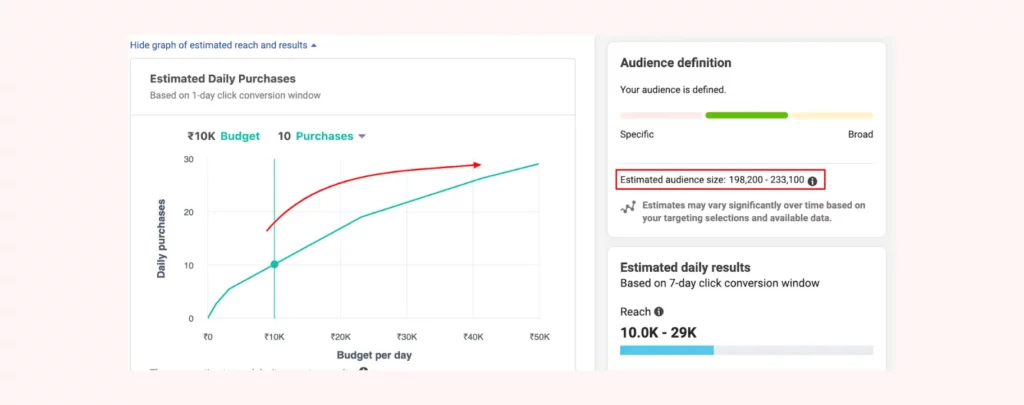
- Strategy 2 – Funnel based targeting for larger audiences ( budget split across funnels & micro-segmentation)
But with a larger audience size, you can experiment with the ad set and scale your budget gradually due to the timeframe you have until the audience is exhausted.
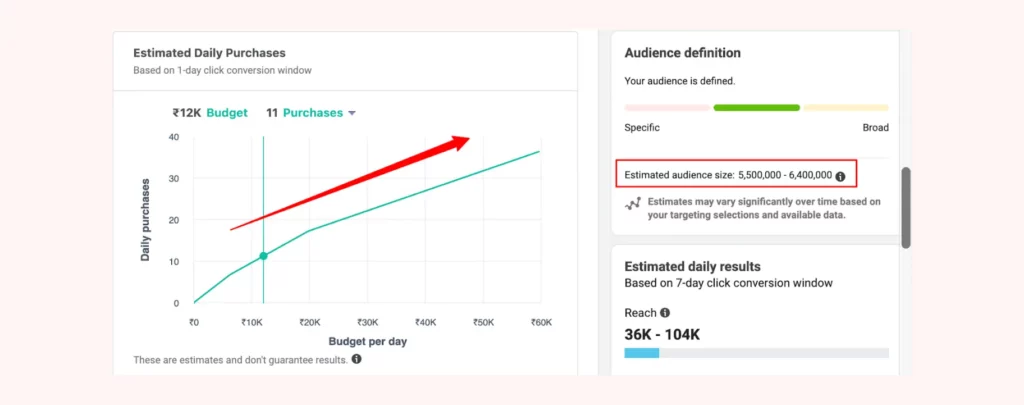
3. Facebook Match Rates
Facebook custom audience match rates have fallen drastically to 25% after the iOS’14 updates and when other laws played into effect. But, when we collected first-party data with CustomerLabs 1PD Ops and synced it to Facebook we could see 90% match rates.
POST iOS’14:

WITH FIRST-PARTY DATA:

4. Google Match Rates
When users opt-out of third-party tracking Google can no longer access user information like before. In CustomerLabs, when we ran an experiment with 1st party data, the match rates for anonymous users ranged between 50-60%,
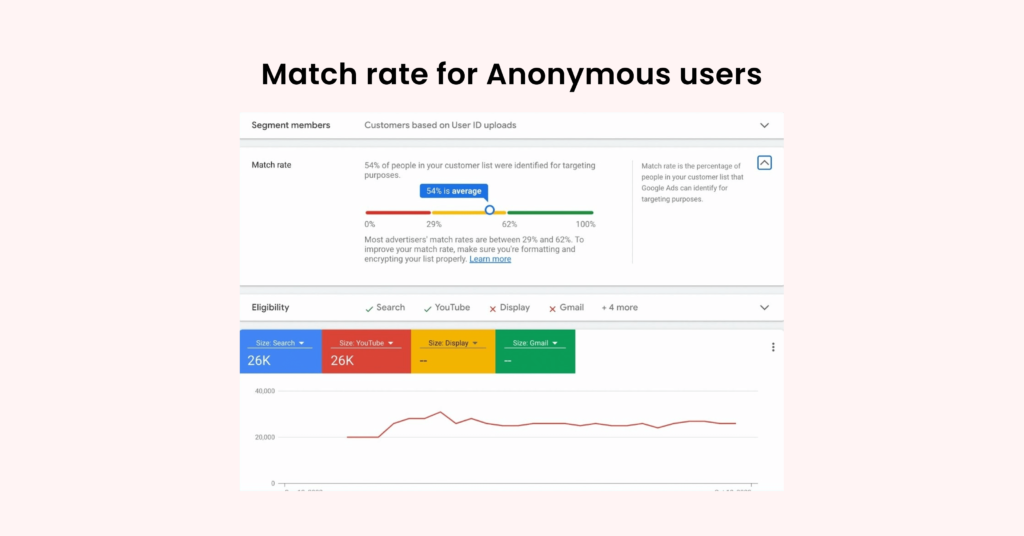
And for known users, the match rates were 100%.
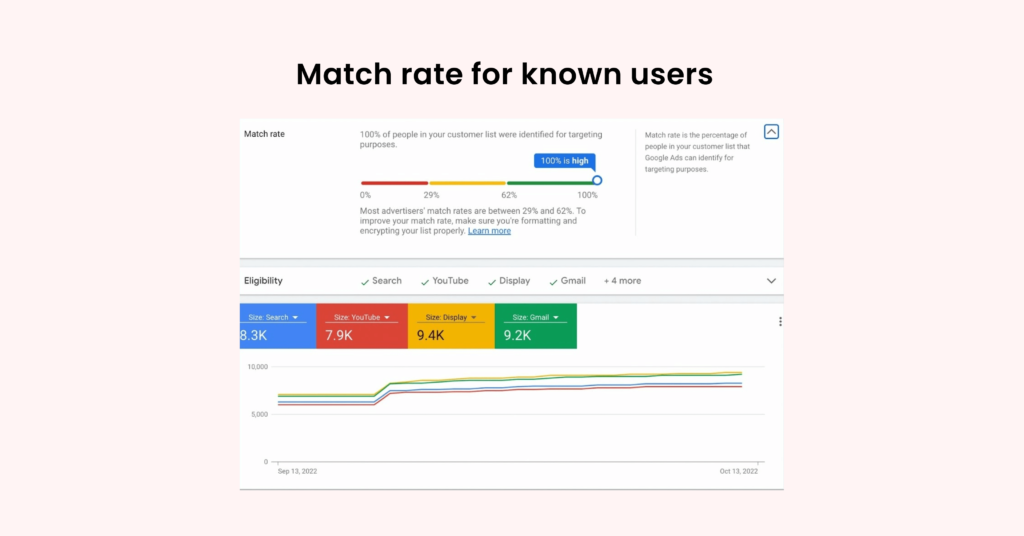
5. Lookalike audience Strategies
Majorly, brands have been relying on ad platforms to collect user behavior data. But now, Facebook has limited access to user behavior. With limited user behavior information, it is pretty difficult to form a top-funnel lookalike audience.
So, it is high time that you focus on collecting your first-party data to reach out to people with similar attributes i.e your top-funnel lookalike audience.
Key Takeaways
In the privacy forward times, it is high time that marketers shift to first-party data strategies. Businesses should show promptitude to start collecting 1st party data now!
Collecting first-party data will benefit you in
- Having Great insights into customers
- Targetting the right audience
- Personalization and Integration
- Online user transparency
- Cost reduction
- Accuracy & Control
The future of advertising relies on first-party data. Go Cookieless!

